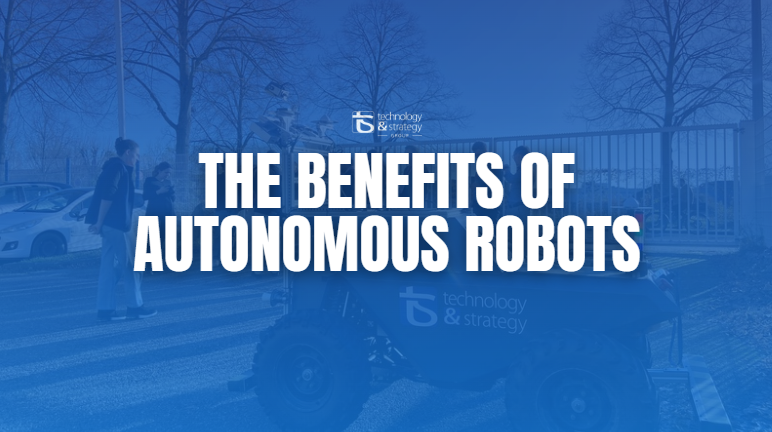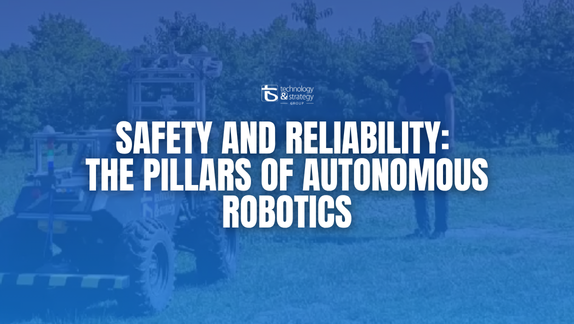When a major automotive manufacturer suffers a ransomware attack that spreads through their Active Directory infrastructure, production lines don't just slow down—they stop completely. According to recent data from IBM, manufacturing now surpasses finance as the most attacked industry sector, with 23% of cyberattacks specifically targeting industrial control systems through identity management vulnerabilities.
Active Directory (AD) serves as the backbone of identity and access management in most enterprise environments, but industrial settings present unique challenges that standard IT implementations fail to address. At its core, AD provides authentication, authorization, and directory services through a hierarchical structure of domains, trees, and forests.
In industrial environments, this traditional structure must be adapted to accommodate several critical requirements:
The most critical distinction lies in the consequence of failure. While AD outages in corporate environments cause productivity loss, in manufacturing settings they can trigger safety incidents, equipment damage, and massive financial losses measured in minutes of downtime.
The convergence of Information Technology (IT) and Operational Technology (OT) creates fundamental identity management conflicts that must be resolved through specialized AD design. Traditional IT security principles often clash with OT requirements in several key areas:
These challenges are particularly acute in automotive manufacturing environments where just-in-time production systems leave no room for authentication delays or access control failures.
Active Directory implementations must evolve to address Industry 4.0 requirements while maintaining security fundamentals. Recent developments include:
Modern AD deployments in industrial contexts now incorporate tiered administrative models that segregate control of production-critical systems from general IT administration. This approach prevents credential theft in the corporate network from compromising industrial control systems.
Creating an effective Active Directory topology for industrial environments requires balancing security principles with operational realities. When designing AD for manufacturing environments, key considerations include network segmentation requirements between IT and OT systems.
A properly designed AD topology for industrial environments typically features:
For a major automotive manufacturer we worked with, implementing a dedicated child domain for production systems with local domain controllers at each plant reduced authentication latency by 67% while enhancing security isolation.
Effective segmentation is crucial in industrial AD implementations. Best practices include administrative tier models that separate administration of production systems from enterprise infrastructure.
These approaches limit lateral movement in case of compromise. In a recent project for an aerospace component manufacturer, implementing a Red Forest architecture with enhanced security domain isolation contained a credential theft incident to non-critical systems, preventing production impact.
Global manufacturing operations require specialized AD deployment models that balance central management with local autonomy. Effective approaches include hub-and-spoke models with central authentication services and local domain controllers.
Deployment ModelBest Use CaseKey BenefitsHub-and-spokeCentralized operationsSimplified management, reduced complexityRegional domainGeographic distributionLocal autonomy, reduced latencyHybrid cloud-connectedModern environmentsScalability, enhanced features
For 24/7 manufacturing operations, we typically recommend deploying a minimum of two domain controllers at each production site with local Global Catalog capability to ensure authentication resilience during network outages.
Industrial Active Directory environments face unique attack vectors that combine traditional IT threats with OT-specific vulnerabilities:
These vectors are particularly dangerous in industrial environments where the blast radius of compromise extends beyond data to physical systems. In a recent incident response engagement for an automotive parts manufacturer, we identified attackers specifically targeting systems administrators with dual responsibilities for business and manufacturing systems.
Enforcing least privilege principles in industrial AD environments requires specialized approaches that address the unique nature of manufacturing operations:
For manufacturing environments, standard Group Policy implementations often prove insufficient. Advanced Privileged Access Management solutions that integrate with industrial control systems while supporting AD authentication provide more appropriate controls.
Domain controllers in industrial settings require enhanced protection measures that go beyond traditional IT security:
In manufacturing environments, domain controllers should be considered critical infrastructure components with corresponding protection levels. For an aerospace manufacturing client, we implemented enhanced domain controller protection including USB port disabling, BIOS password protection, and boot sequence locking to prevent physical tampering.
Detecting Active Directory compromises in industrial environments requires specialized monitoring focused on:
Effective incident response for industrial AD requires predefined playbooks that balance security requirements with operational continuity. For critical manufacturing systems, containment strategies must consider production impact, with staged remediation approaches that minimize downtime.
Integrating Active Directory authentication with industrial control systems presents unique challenges. While modern SCADA platforms support AD integration, many legacy systems and PLCs require special consideration:
For a major automotive manufacturer's paint shop systems, we implemented a secure authentication proxy that enabled legacy PLCs to authenticate via Active Directory while maintaining strict security controls and auditability.
Industry 4.0 environments feature hundreds or thousands of connected devices requiring identity management. Effective strategies include automated provisioning of machine identities and certificate lifecycle management.
This area represents one of the most significant challenges in modern industrial AD implementations, as the number of non-human identities often exceeds human accounts by orders of magnitude. For an automotive production line with over 5,000 connected devices, we implemented an automated identity lifecycle management system that reduced manual administration by 87% while improving security posture.
A European automotive manufacturer faced challenges securing their connected vehicle development environment, which required collaboration between internal teams, suppliers, and testing facilities. The solution included:
This architecture enabled secure collaboration while maintaining strict control over testing environments and vehicle development systems. The implementation reduced security incidents by 76% while actually improving developer productivity through streamlined authentication processes.
Manufacturing environments require exceptional availability for AD services. Effective strategies include distributed domain controller placement based on network topology and production criticality.
For automotive production environments, we typically recommend a minimum of four domain controllers per production domain with at least two per physical location. This architecture ensures authentication services remain available even during partial infrastructure failures.
DR planning for industrial AD must address unique requirements that differ significantly from traditional IT environments:
In industrial environments, traditional backup and recovery approaches often prove insufficient. For a critical manufacturing facility, we implemented a specialized DR solution featuring real-time AD data replication to standby systems with automated failover capabilities, reducing potential authentication outages from hours to minutes.
Validating AD resilience in industrial environments requires specialized testing approaches that account for production constraints:
For an automotive component manufacturer with just-in-time delivery requirements, we developed a comprehensive testing program that identified several resilience gaps in their AD infrastructure. Addressing these issues reduced authentication-related production incidents by 94% over the following year.
Industrial sectors face specific regulatory requirements that impact AD implementations. Key compliance frameworks include TISAX for automotive suppliers and various industry-specific standards.
Meeting these requirements necessitates comprehensive documentation of AD architecture and security controls, segregation of duties implementation, and robust audit capabilities. For automotive industry clients pursuing TISAX certification, we've developed a specialized AD assessment framework that maps configuration settings directly to VDA ISA requirements.
Effective auditing for industrial AD implementations should focus on authentication activities for privileged accounts across IT/OT boundaries:
Standard Windows event logging often proves insufficient for regulated industrial environments. For aerospace manufacturing clients, we typically implement enhanced logging solutions that capture detailed authentication metadata while filtering out noise, providing focused visibility into security-relevant events.
Maintaining compliance requires systematic approaches to AD governance that include baseline documentation and formalized change management processes:
For regulated manufacturing environments, we recommend implementing automated compliance checking tools that continuously validate AD configurations against required security baselines, generating alerts when drift occurs.
Industrial organizations are increasingly adopting hybrid identity architectures that combine on-premises AD with cloud-based identity services. Effective migration strategies include phased adoption starting with non-critical systems.
For an automotive parts manufacturer, we implemented a hybrid identity model that maintained on-premises AD for production systems while leveraging cloud identity for corporate applications, reducing administrative overhead by 32% while enhancing security capabilities.
Azure AD integration offers significant benefits for industrial organizations, but requires careful planning to maintain security boundaries:
For automotive manufacturing clients, we've successfully implemented Azure AD integration that enables secure supplier collaboration for engineering systems while maintaining strict separation from production environments.
Implementing Zero Trust principles in industrial AD environments requires a pragmatic, phased approach that acknowledges operational constraints:
For manufacturing environments, we recommend beginning with enhanced protection of domain controllers and privileged accounts before expanding to broader Zero Trust initiatives. This foundation-first approach ensures critical production systems remain protected throughout the transformation.
Technology & Strategy has developed a specialized AD maturity assessment framework for industrial environments, focusing on five key dimensions:
This framework enables manufacturing organizations to benchmark their AD implementations against industry best practices and develop targeted improvement roadmaps aligned with their specific industrial constraints.
Our proven methodology for industrial AD security projects includes comprehensive discovery and phased implementation:
This approach has been refined through dozens of successful industrial AD transformation projects, balancing security enhancements with operational continuity requirements.
A European automotive manufacturer faced significant security challenges with their legacy AD infrastructure spanning 12 production sites. Their environment featured flat administrative models with excessive privileges and inadequate segregation between corporate and production systems.
"When we started this transformation, the client had authentication dependencies creating single points of failure across their entire production network. Our approach was to implement a comprehensive administrative tier model while ensuring zero production downtime during the transition. The key was understanding that in manufacturing, availability isn't just about business continuity—it's about safety and regulatory compliance."
T&S implemented a comprehensive transformation including:
The result was a 73% reduction in the attack surface, elimination of authentication-related production incidents, and successful TISAX certification across all sites. This transformation showcases how proper AD architecture can simultaneously enhance security and operational efficiency in industrial environments.
and identity management was crucial to our success."
These case studies demonstrate that with proper expertise and methodology, industrial organizations can achieve world-class AD security without compromising operational excellence. The key is working with specialists who understand both the technical requirements and the unique constraints of manufacturing environments.


Discover the winners of the T&S Sponsorship Program 2025. Technology & Strategy supports 7 organizations driving social and environmental impact across Europe.
READ MORE
Discover how autonomous robots developed at Englab’s R&D Center can positively impact the environment and economy through advanced and sustainable technologies.
READ MORE
Discover how Englab's R&D Center ensures the safety and reliability of autonomous robots through advanced technologies and strict protocols.
READ MORE